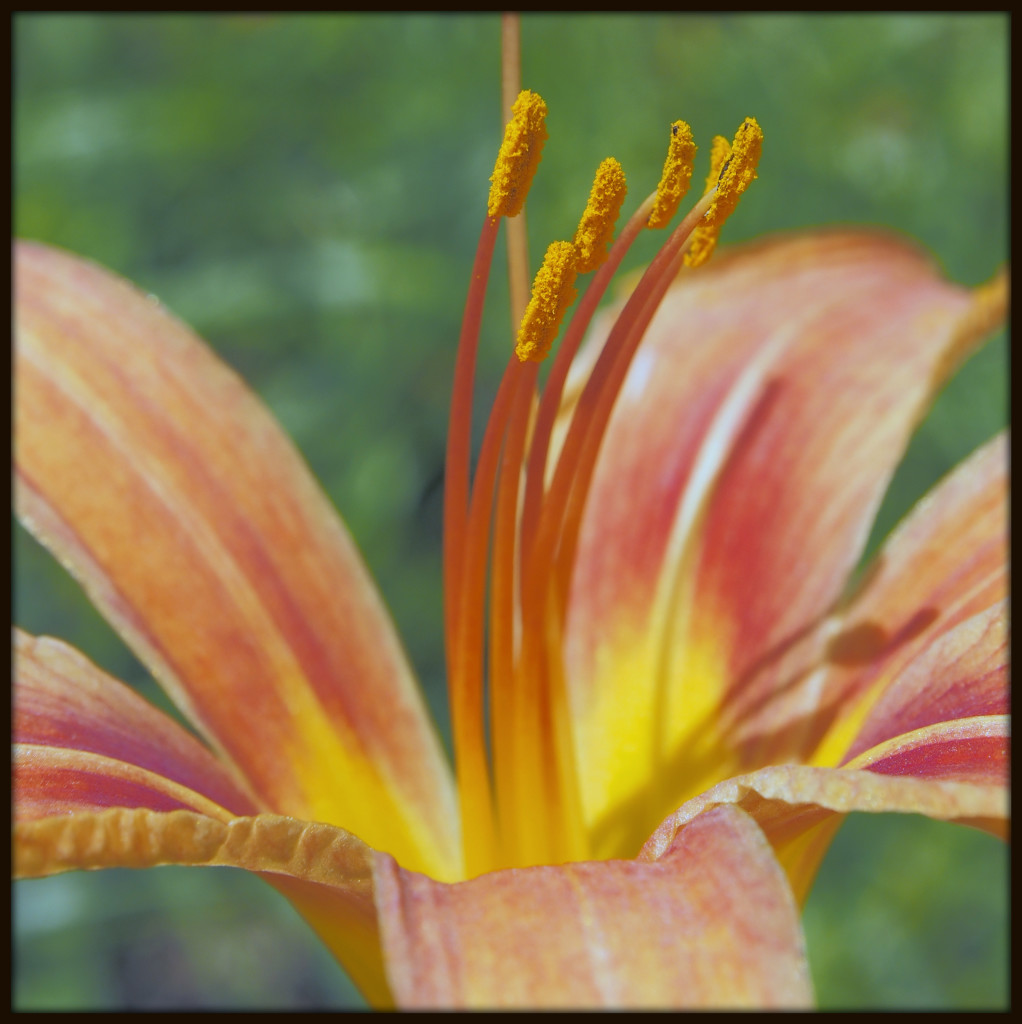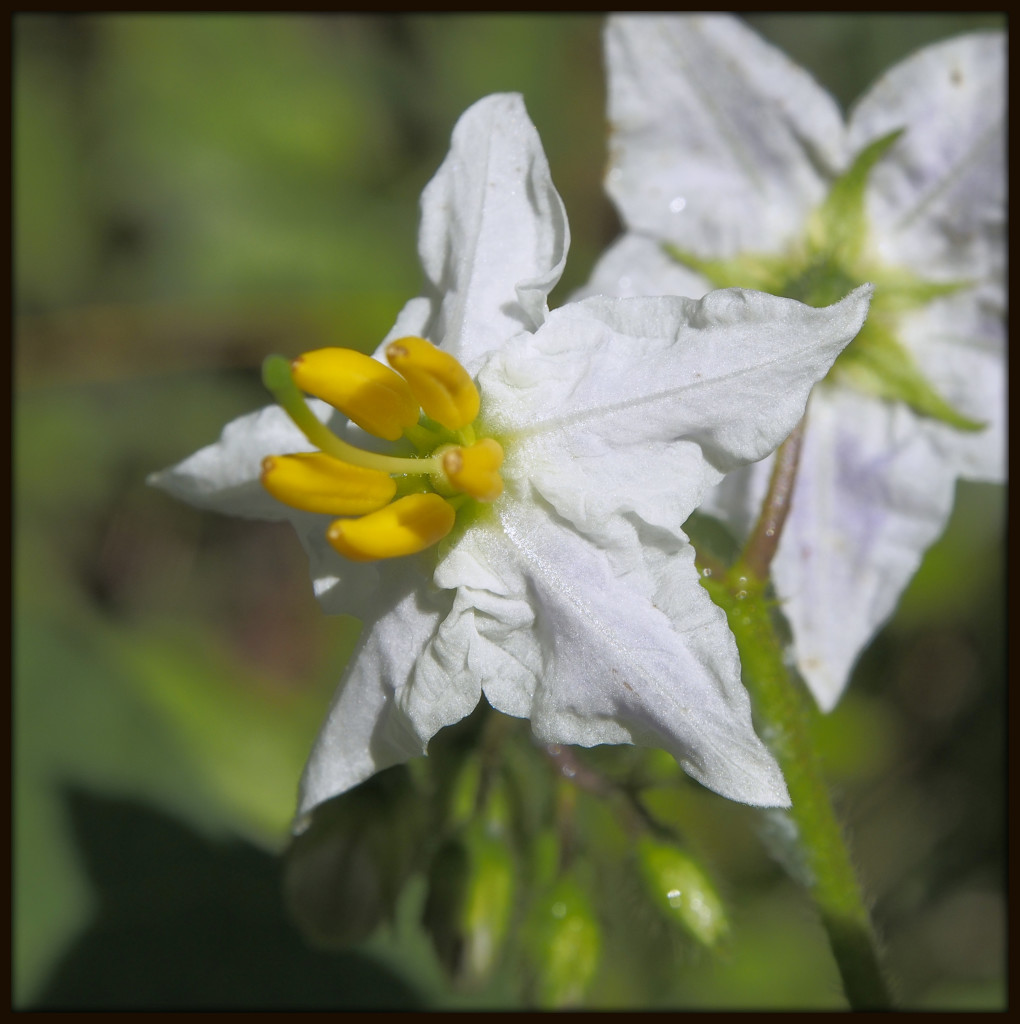In addition to the all of the still-blooming daisy fleabanes (on their way out, at last), two other flowers are currently in bloom along Piney Woods Church Road: a lone daylily, and a small number of Carolina horsenettles.
I photographed this daylily plant just two days ago; however, today’s image is of a different bloom. Each one lasts for only a single day, as the name suggests. Since there was only one bloom, I again resisted the urge to pluck it. As I noted in my earlier post, the petals taste like sweet lettuce, adding a splash of orange to a salad.

On the other end of the spectrum is the Carolina horsenettle (Solanum carolinense), also known as sand brier, radical weed, bull-nettle, tread-softly, apple of Sodom, and the devil’s tomato. As several of these names suggest, the Carolina horsenettle is not edible — in fact, it can be quite toxic, due to the presence of solanine. Ingesting any part of this thorny plant can make one quite ill; eating the tomato-like fruits can be fatal. Ironically, unlike the daylily, the Carolina horsenettle is native to the Southeastern United States, though it has now spread across the country.
